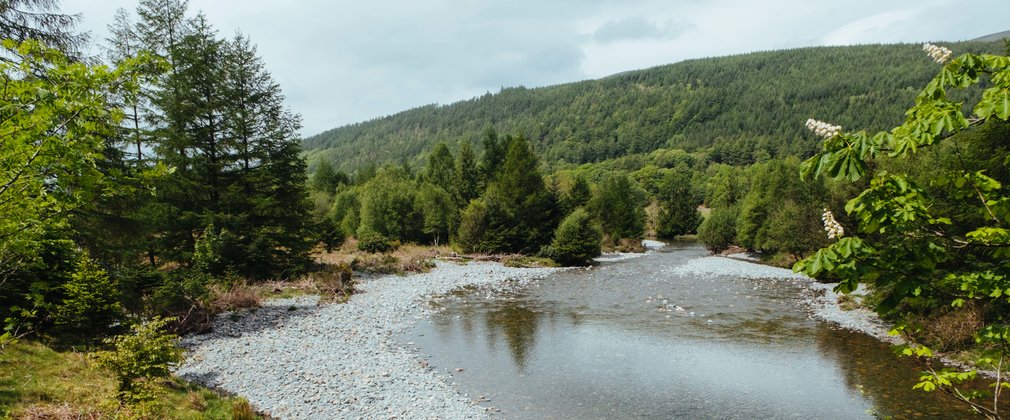
New wild areas for nature recovery in the nation’s forests
With a little helping hand, Forestry England is letting nature transform more than 8,000 hectares of land in four of the nation’s forests. Taking a new approach to managing forest landscapes, the organisation is creating four wild areas where nature recovery will be at the forefront while still producing sustainable timber and welcoming visitors.
Forestry England is the country’s largest land manager with over a quarter of a million hectares in their care and a long history of successful wildlife conservation. This puts them in a great position to work across large landscapes to restore nature. This new work, letting nature take the lead, will over decades make them the most valuable places for wildlife across England. And longer-term, biodiversity benefits will spread out across other forests and the wider countryside.
Kielder Forest in Northumberland will have the biggest new wild area, covering at least 6,000 hectares. Here, Forestry England will restore a fully-functioning upland ecosystem by expanding native woodland and scrub and creating more open habitats including restoring peatland and natural water courses. Through pioneering integrated land management, we will create an innovative model of modern productive forestry. This will balance nature-first approaches alongside sustainable wood production, ensuring a truly resilient forest for a changing environment for generations to come.
Other wild areas are Newtondale in North Yorkshire, Purbeck in Dorset, and Neroche in Somerset. Each unique landscape will have its own mix of activities all designed to restore natural processes and increase the diversity and abundance of wildlife.
Helping nature recover may include reintroducing lost wildlife including butterflies, rare plants, pine martens and beavers, rewiggling rivers, introducing wilder cattle or even moving fungi to restore soil. Visitors to the wild areas will have a wilder, more immersive nature experience in a landscape where space is given for wildlife to move and thrive.
Andrew Stringer, Forestry England Head of Environment, said:
“There is an exciting unpredictability about this work in our four wild areas. We simply don’t know exactly how each of them will change over time or the detail of what they will look like. But this uncertainty is a positive part of being experimental and allowing natural processes to shape each landscape in the years ahead. We are confident that whatever happens these areas will become more nature-rich, with benefits for neighbouring landscapes.
“We’re not choosing to return one or two lost species. This is about allowing all parts of the jigsaw to fit back together so an entire ecosystem can function well across large areas, from apex predators at the top to microscopic soil organisms beneath our feet. We will intervene less in these four wild areas, giving nature the time and space to reshape the forest landscape. Forestry will still be an essential activity, creating canopy gaps and varied structure, acting just like the lost megaherbivores of the past. Over time the benefits will be enormous in terms of climate resilience, reversing biodiversity loss, providing greater natural capital benefits to society such as natural flood mitigation, soil health, air quality and carbon storage. It’s an exciting new chapter in our biodiversity work in the nation’s forests.”
Forestry England will work alongside many expert partners to create the wild areas. Some will be involved in hands on nature restoration activity, others in scientific data gathering and analysing the progress in each area.
The soil eDNA baseline data gathered in all four wild areas will be free to access as part of Forestry England’s commitment to open data sharing, collaboration and building a strong evidence-base for wilding activities.
The wild areas work is being supported by Defra’s biodiversity funding, with corporate partner Forest Holidays contributing funding over 5 years toward creating the wild area in Kielder Forest. Forest Holidays are Forestry England’s first major biodiversity corporate partner.
A video with animations explaining the wild areas is available here.
For further information visit Creating wilder forests | Forestry England
Notes to Editor
- Images are available here. Please credit Forestry England/Crown copyright.
A video with animations explaining the wild areas is available here. - Forestry England manages and cares for the nation’s 1,500 woods and forests, with over 291 million visits in 2022/23. As England’s largest land manager, we shape landscapes and enhance forests for people to enjoy, wildlife to flourish and businesses to grow. We are continuing the work we have already started to make the nation’s forests resilient to climate change and by 2026 we will:
- create at least 6,000 more hectares where we integrate wilding activities in our productive forests.
- increase the diversity of visitors to the nation’s forests and have one million hours of high-quality volunteer time given to the nation’s forests
- plant at least 2,000 hectares of new, high quality, predominantly broadleaf woodlands
For more information visit forestryengland.uk. Forestry England is an agency of the Forestry Commission.
3. Other wild areas include Newtondale in North Yorkshire, Purbeck in Dorset, and Neroche in Somerset. More information on these will be released at another time.
4. Media Contact: Becky Ulewicz, Media Relations Officer, media@forestryengland.uk
